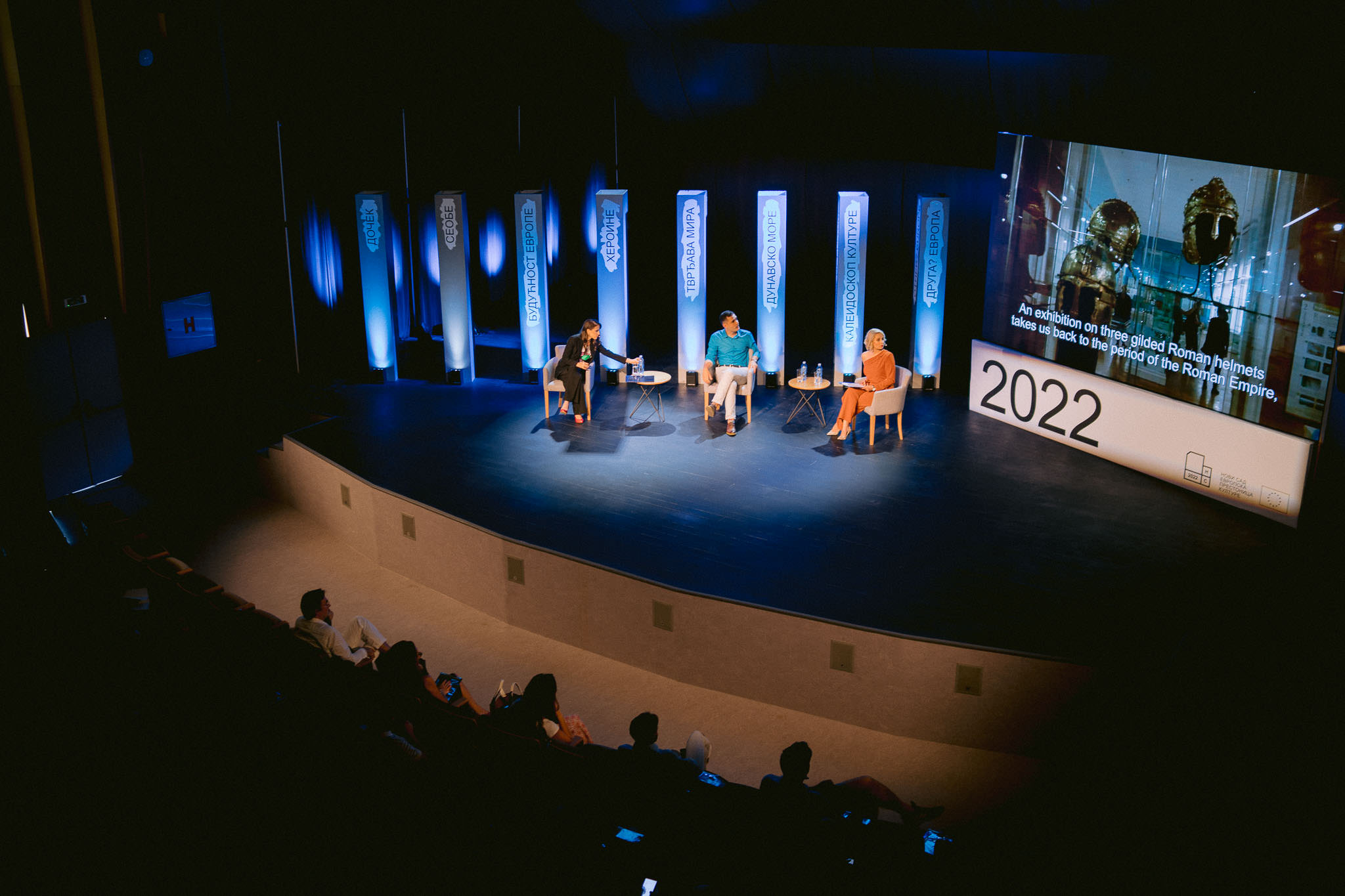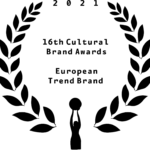Novi Sad, the very first city from Serbia to ever bear a title of the European Capital of Culture, will celebrate European values in 2022 with more than 1500 cultural events and 4000 local, national and international artists, within a total of eight programme arches. Novi Sad will share the title together with Kaunas (Lithuania) and Esch-Sur-Alzette (Luxembourg).
In the future capital of culture, some of the most significant European organisations, events and artists will introduce themselves to the Novi Sad audience and anyone who decides to visit the events. The Burgtheater, one of the most respectable theatres in the world, will appear at the Kaleidoscope of Culture in 2022 together with Ars Electronica, a famous European centre for new media art, while the Department of Scene Architecture, Technique and Design from the Faculty of Technical Sciences in Novi Sad will join forces with the Prague Quadrennial.
The Irish Dublin Theatre Festival and the Italian Cultural Association CapoTrave/Kilowatt, will contribute to the international theatre offer, together with the Gothenburg Dance and Theatre Festival from Sweden, and Polyplanity, a Greek organisation dedicated to an innovative model of performance with the focus on true stories and real people.
In order to contribute to the further development of the cultural availability in Novi Sad, the Typhlological Museum from Zagreb, one of the rare museums in Europe dealing with this topic, as well as the Viennese Kunsthistorisches Museum, one of the best museums in the world, will share their knowledge and experience within the programme of Other? Europe. One of the best artistic circuses in Europe, BETA CIRCUS from France, will join the programme as well.
Within Other? Europe, Novi Sad will have the honour of witnessing the performance of Evelyn Glennie, a British percussionist and a two-time Grammy winner in the field of classical music, as well as the Polar Music Prize winner, also called the ‘Nobel prize of music.’ The Ulay Foundation will present works by the famous German conceptual artist Frank Uwe Laysiepen.
Carminho, the new queen of fado and one of the best Portuguese singers, will perform within Doček, alongside the Finnish musician Jimi Tenor, who merges jazz with other music genres in an authentic way. The Spanish band Barcelona Gipsy Orchestra will perform within the Migrations programme arch, with Kaori Ito, a Japanese artist of contemporary dance living in France, joining them too.
The world-renowned conductor and composer Karmina Šilec, known for her originality in the world of music and theatre in Novi Sad, will introduce herself within the Future of Europe programme arch, together with the famous Dutch choreographer Panda van Proosdij.
While the Dutch director Michael Helmerhorst will direct a play about the Novi Sad comic book series Cat Claw by local artist Bane Kerac, the great exhibition about Mileva Marić Einstein’s life and importance will be presented to the public thanks to the cooperation of Gabrielle Greison, an Italian writer, director and physicist, and the distinguished Serbian team. The Novi Sad Case3D studio, one of the best architectural studios for virtual reality in the world, as well as Aleksandra Ninković, and Dušan Jovović, are also going to contribute to this programme. On the other hand, the prominent female authors from the Balkans, Minja Bogavac, Olga Dimitrijević and Tijana Grumić from Serbia, as well as Vedrana Božinović from Bosnia and Herzegovina and Vedrana Klepica from Croatia are going to write the text for the play about the Serbian scientist. The play is going to be co-produced by Sterijino Pozorje and the Sombor theatre.
The reconstructed suburbium of the Novi Sad’s picturesque Petrovaradin Fortress is going to turn into Tesla’s light gallery thanks to the international cooperation of artists during Doček, honouring Nikola Tesla, an honorary citizen of Novi Sad and Prometheus of modern times.
The director of the opening ceremony scheduled for 13 January is going to be a legendary Slovenian director Dragan Živadinov, co-founder of the artistic movement Neue Slovenische Kunst and founder of the unique postgravity art. Haris Pašović, Kokan Mladenović, Anica Tomić, Robert Raponja, Aleksandar Nikolić and many others are going to introduce their artistic achievements to the Serbian Athens within other programme arches.
Within the Future of Europe programme arch, writers Jasminka Petrović, Tode Nikoletić, Dejan Aleksić, Miloš Petković and István Lakatos will present themselves to the youngest ones.
In addition to all cultural institutions in Novi Sad and most of the non-institutional scene, the world-famous people from Novi Sad will also contribute to the European Capital of Culture programme. Aleksandra Vrebalov, one of the best Serbian composers who lives and works in New York, will be joined by Végel László, a famous Serbo-Hungarian writer, and Stefan Milenković, a world-famous violinist.
The 2022 programme announcements will continue in the months to follow. The entire programme book will be published in October this year.
In the programme narrative of the Novi Sad – European Capital of Culture project, four programme bridges have been defined and symbolically named after the already existing bridges in Novi Sad, i.e., values the city wants to develop in the context of European integration: Freedom, Rainbow, Hope and Love. The bridges are divided into programme arches presenting chronologically divided programme units, with a total of eight programme arches in 2022:
- Doček (Celebration of Interculturality / 31. 12. 2021 – 16. 1. 2022),
- Migrations (Connecting Diversity / 1. 2 – 20. 3. 2022),
- Future of Europe (Culture in Upbringing and Education / 20. 3 – 15. 5. 2022),
- Heroines (Power of Female Creativity / 16. 5 – 16. 6. 2022),
- Fortress of Peace (Culture of Dialogue / 17. 6 – 17. 7. 2022),
- The Danube Sea (Discovering and Preserving the Danube / 22. 7 – 21. 8. 2022),
- Kaleidoscope of Culture (Culture of Togetherness / 1. 9 – 7. 10. 2022) and
- Other? Europe (Culture of Another / 8. 10 – 27. 11. 2022).
Photo: V. Veličković




